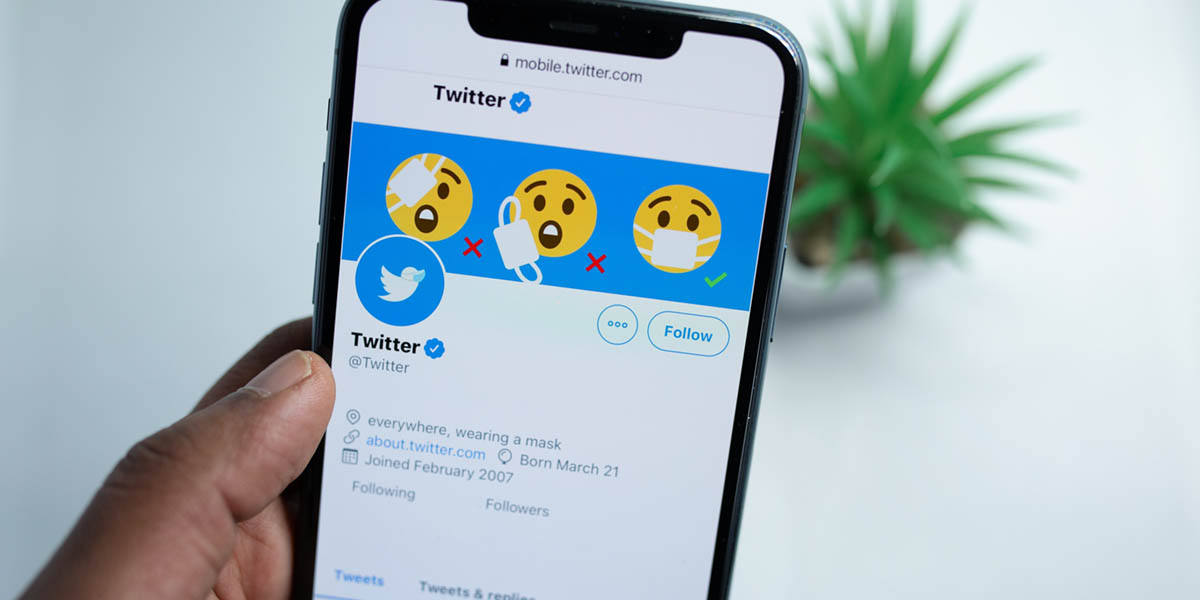Twitter study tracks U.S. sentiment about unemployment, mental health and addiction in early months of COVID-19
Computer science team uses linguistic analysis to better understand the struggles that Americans faced during pandemic

When the COVID-19 pandemic hit the U.S. in mid-March 2020, the fear of the virus and the resulting lockdown upended millions of people’s lives. In-person socializing became nearly impossible, so the internet became the obvious place for them to share their frustrations.
In their recent study titled “Understanding the Societal Disruption Due to COVID-19 via User Tweets,” Arti Ramesh and Anand Seetharam — both assistant professors in the Thomas J. Watson College of Engineering and Applied Science’s Department of Computer Science — conducted a linguistic analysis on a sampling of Twitter content to better understand the struggles that Americans faced during the first three months of the pandemic. Co-authoring the study, which was accepted for publication to the IEEE Smartcomp conference, was graduate student Swaroop Gowdra Shanthakumar, MS ’21.
The research is an expansion of an earlier study that collected and sorted 10 days’ worth of U.S. tweets from March 2020. This new study zeroes in on 50,000 COVID-related tweets to assess opinions and concerns regarding the socio-economic conditions of addiction, mental health, unemployment and immigration.
“When we analyzed the original data, we found these themes that could be worsened by the pandemic,” Ramesh said. “We wanted to know: What are they talking about? And what are the different themes inside each of these topics that they are talking about?
“If people are talking about addiction, how are they using those words? What are they referring to? Are they having some struggle coping with addiction during the hard times of a pandemic? Or are they having difficulty finding a recovery center or getting to an AA meeting? These things could be worsened by the pandemic.”
For instance, subtopics under the unemployment category included not only losing a job or advertising jobs but also being unable to get jobless benefits because of the surge to apply that overwhelmed state unemployment offices. Addiction or mental health tweets discussed specific situations but also more general concerns about people not getting the support they needed as hospitals coped with COVID-19 patients.
“Unemployment has affected a greater number of people than addiction just by the nature of the problem,” Seetharam said. “That’s reflected in the number of tweets that we got on that topic, but the number of tweets for addiction is large enough, considering what category we are talking about. A smaller number of people are facing these issues, and even a smaller number of them are actually vocal about them.
“Considering that we got about 3,300 tweets related to addiction and about 6,000 tweets related to mental health, I think that’s a really large number of tweets related to that topic, compared to about 32,000 for unemployment, because millions of people lost their jobs.”
A small but significant minority of tweets also showed other underlying problems that Americans in lockdown faced.
“Some of the most frequent words are very concerning — for example, violence, fear, abuse, depression, anxiety and suicide,” Ramesh said. “That’s very disconcerting, and it says something about the really bad situations out there that we need to address. It’s not just that people were finding it difficult, but those are words that show a loss of control for some people.”
Ramesh and Seetharam believe that this type of research offers a representative sample of Twitter users to extrapolate wider trends in U.S. society, so that policymakers can make good choices to address today’s concerns as well as build a better foundation for tomorrow.
“I don’t think that anybody first decided to post something on Twitter without trying to file their unemployment benefit,” Seetharam said. “I think they tried, and somehow they couldn’t get through. That’s why they were taking it to Twitter. Somebody who has been struggling with addiction maybe was not able to find a way to somehow cope with their issues. That’s why they are going out there. It’s not like a colloquial chat — it is about some very deep issues.”
As part of their future work, the researchers are collecting data to understand the attitudes of acceptance or reluctance regarding the COVID-19 vaccines, as well as issues related to the equity of the vaccine distribution.
